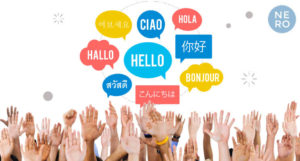Introduction
SEO and accessibility are words that often get thrown around in the digital marketing world. But what do they mean? And how are they connected? This article will give you a better understanding of how accessibility work together with SEO to help your website rank better in search results.
SEO explained
Search Engine Optimisation (SEO) is the process of getting your website to show up at the top of a search engine results page (SERP) when you search for a certain term. SEO is about keywords, how people search for things, what they are looking for and more.
For example, if you were searching for “sneakers” on Google (I’m watching ‘sneakerheads’ on Netflix), you might expect to see results from Nike’s site at the top because they’re an authority in sneaker culture. This is because they’ve spent time optimizing their site to rank higher than other sites that have used similar keywords without being as authoritative or trustworthy as them – this is called “ranking organically.”
In contrast, optimizing using SEO means specifically targeting what people search for when they want something specific (like sneakers), so that if someone searches “where can I buy sneakers,” you’ll have some targeted ideas about what kind of content will attract those customers to your website.
But there’s a lot more to SEO than just using relevant keywords and understanding consumer behaviour. It has to do with ensuring that the user experience on your website is optimised too. Remember, for a search engine like Google, the people who use their engine for search are their customers – part of Google’s UX is to ensure that the results they provide for search terms are websites that their customers will have the best possible experience using. Good usability on your website is a key part of a great SEO strategy.
Website Accessibility explained
Accessibility is about making websites work for everyone, regardless of their abilities. This can include physical disabilities, problems with eyesight, cognitive issues and even temporary impairments e.g. a broken hand preventing a website visitor from using their mouse.
The World Wide Web Consortium (W3C) has identified a number of elements that should be included on every website in order to make it accessible. These are known as Web Content Accessibility Guidelines (WCAG). In many countries, including the UK, USA and Canada, WCAG forms the basis for website accessibility laws.
You’re already benefitting from accessibility
You may not know it but you’re probably already benefitting from accessibility. If you’ve ever watched a video on the internet and used the captions feature to turn on subtitles, then you’ve seen how accessibility techniques help everyone.
Accessibility is about making sure that everyone has access to your content and can use it in their own way. For example, if I’m deaf, captions on videos allow me to enjoy the same entertainment that my hearing friends do–and it’s not just for people with disabilities! When my wife and I first had children we would keep the TV volume low and use captions to enjoy our favourite shows without disturbing the babies at sleep.
Website accessibility sounds like a lot of work
While making a site accessible can seem like extra work, it’s really just following coding best practices and using standard methods to design and build your site.
You can use many of the same techniques that you already use with accessibility in mind. For example, if you’re using CSS, ensure that you have semantic class names so that screen readers won’t get confused when they start reading content on the page. Also, try not to rely on colour alone for conveying meaning: instead use text-based cues (such as bolding or italicizing) along with colour to help users understand what each part of a page does.
You can also use tools like WAVE or Accessibility Developer Tools (ADT) Chrome extension to test how your website works for users with disabilities by simulating different types of impairments such as colour blindness or low vision. This will let you identify any issues before publishing your site so that people who need your content will be able to access it easily!
If these tips sound overwhelming don’t worry — At NEROdigital we understand both user experience design principles as well as accessibility requirements set forth by WCAG 2 and we can help you design an accessible website.
A good SEO strategy includes making sure your site is accessible to all users
As mentioned earlier, user experience (UX) is a key ingredient in SEO and website accessibility is about making sure your site can be used by everyone, including people who use assistive technologies like screen readers or Braille displays. In other words, a great by-product of making your website more accessible is that it makes the overall user experience better – for everyone who visits your website!
Simply put, accessibility is important for usability and usability is important for SEO; that’s why we need to do what we can to make sure that everyone who might want to visit our site is able to reach it. Not only does this help with rankings, but it also ensures that the internet remains a place where everybody has access regardless of disability or circumstance (i.e., lack of resources). And since this issue affects so many parts of society—from education and entertainment to employment opportunities—it’s vital we keep working toward greater accessibility across the board!
If you want to rank higher in Google searches, you need a high quality website that works for everyone
The best way to do this is by creating content-focused websites with user friendly design and good SEO. But, you also need to make sure your website is accessible by people with disabilities so that it can meet the needs of all users.
Conclusion
In this article, we’ve covered what SEO and website accessibility are. If you want to rank higher in Google searches, you need a high quality website that works for everyone. We hope that you now have a better understanding of these concepts and how they can help you reach more customers. As always we’re always happy to help – get in touch to book a call with us.




